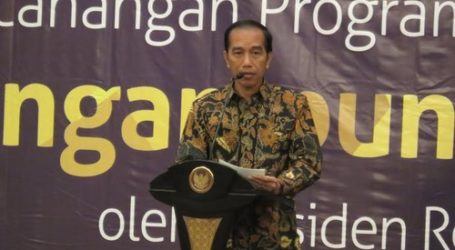500,000 JOBS NEEDED TO COMBAT UNEMPLOYMENT IN AFGHANISTAN
 Kabul, 6 Jumadil Akhir 1434/15 April 2013 (MINA) – The government of Afghanistan expressed concerns regarding unemployment issues in the country which is considered to be one of the main motives behind growing insurgency, according to Khaama Press report monitored by Mi’raj News Agency (MINA).
Kabul, 6 Jumadil Akhir 1434/15 April 2013 (MINA) – The government of Afghanistan expressed concerns regarding unemployment issues in the country which is considered to be one of the main motives behind growing insurgency, according to Khaama Press report monitored by Mi’raj News Agency (MINA).
According to the officials at least 500,000 job opportunities will be required amid NATO troops withdrawal from the country and as the foreign aid tapers off that will have direct impact over the economy of Afghanistan.
The officials further added that the jobes needs to be created within a year to combat growing unemployment.
Some of the international organizations including local companies are making workers redundant as international aid mooney declines and foreign troops are preparing to leave Afghanistan.
Afghanistan’s economy needs to rebuild on its own as the international community remains lukewarm in its commitment to Afghanistan’s economic future.
At a meeting of international donors on July 7, 2012, pledges from the international community fell $2 billion per year short of what Afghanistan’s central bank had requested.
The uncertainty surrounding Afghanistan’s economy is injecting fear into the country at a time when its youngest generations are in serious need of reassurance.
However as the number of the qualified candidates increases, some of the Afghans are setting up ways to find employemtn without government help.
Gradually recovered
Afghanistan’s economy is recovering from decades of conflict. The economy has improved significantly since the fall of the Taliban regime in 2001 largely because of the infusion of international assistance, the recovery of the agricultural sector, and service sector growth. Despite the progress of the past few years, Afghanistan is extremely poor, landlocked, and highly dependent on foreign aid.
Much of the population continues to suffer from shortages of housing, clean water, electricity, medical care, and jobs. Criminality, insecurity, weak governance, lack of infrastructure, and the Afghan Government’s difficulty in extending rule of law to all parts of the country pose challenges to future economic growth.
Afghanistan’s living standards are among the lowest in the world. The international community remains committed to Afghanistan’s development, pledging over $67 billion at nine donors’ conferences between 2003-2010.
In July 2012, the donors at the Tokyo conference pledged an additional $16 billion in civilian aid through 2016.
Despite this help, the Government of Afghanistan will need to overcome a number of challenges, including low revenue collection, anemic job creation, high levels of corruption, weak government capacity, and poor public infrastructure. (T/P09/E1)
Mi’raj News Agency (MINA).






